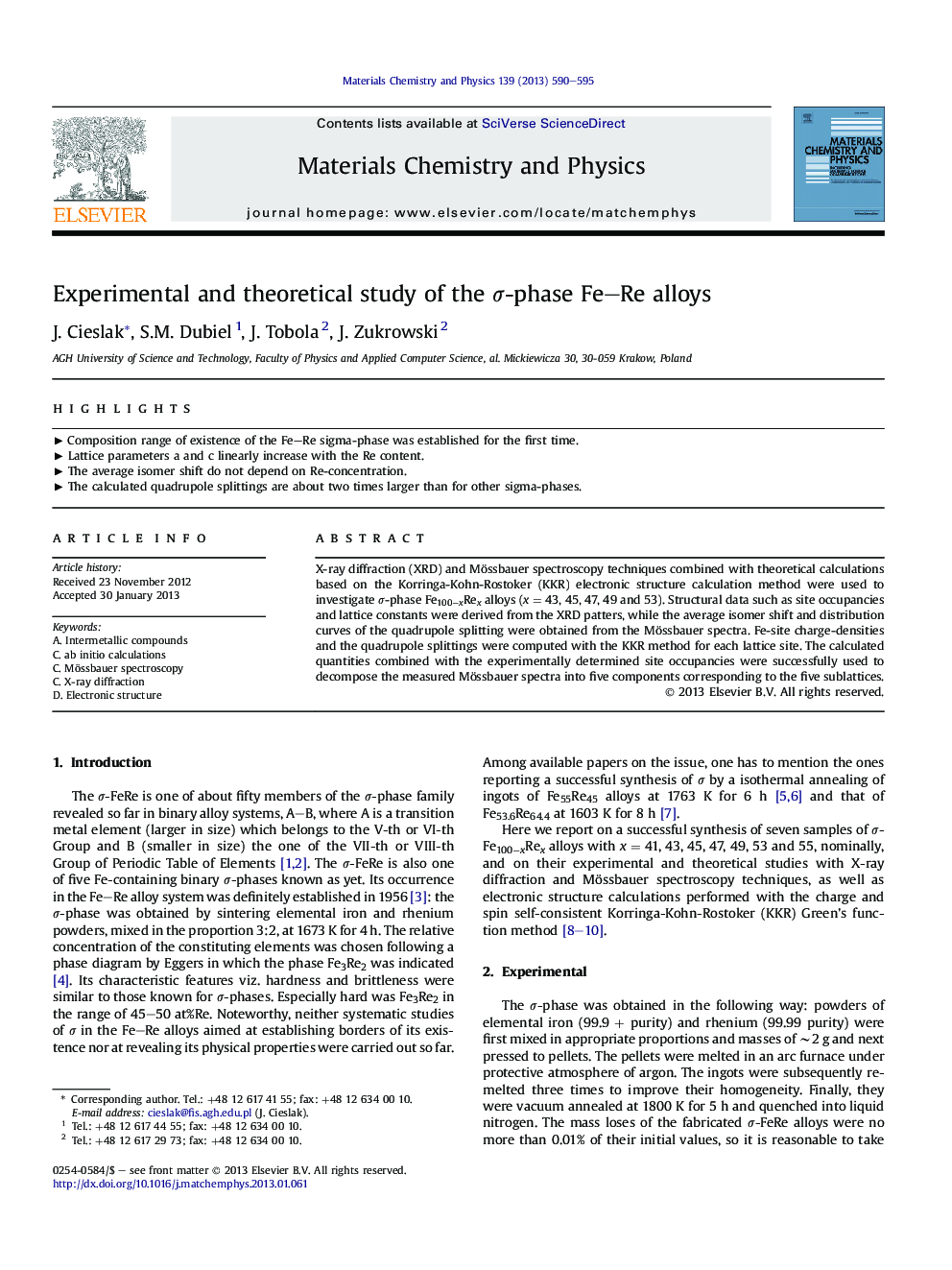| Article ID | Journal | Published Year | Pages | File Type |
|---|---|---|---|---|
| 1522747 | Materials Chemistry and Physics | 2013 | 6 Pages |
X-ray diffraction (XRD) and Mössbauer spectroscopy techniques combined with theoretical calculations based on the Korringa-Kohn-Rostoker (KKR) electronic structure calculation method were used to investigate σ-phase Fe100−xRex alloys (x = 43, 45, 47, 49 and 53). Structural data such as site occupancies and lattice constants were derived from the XRD patters, while the average isomer shift and distribution curves of the quadrupole splitting were obtained from the Mössbauer spectra. Fe-site charge-densities and the quadrupole splittings were computed with the KKR method for each lattice site. The calculated quantities combined with the experimentally determined site occupancies were successfully used to decompose the measured Mössbauer spectra into five components corresponding to the five sublattices.
► Composition range of existence of the Fe–Re sigma-phase was established for the first time. ► Lattice parameters a and c linearly increase with the Re content. ► The average isomer shift do not depend on Re-concentration. ► The calculated quadrupole splittings are about two times larger than for other sigma-phases.
